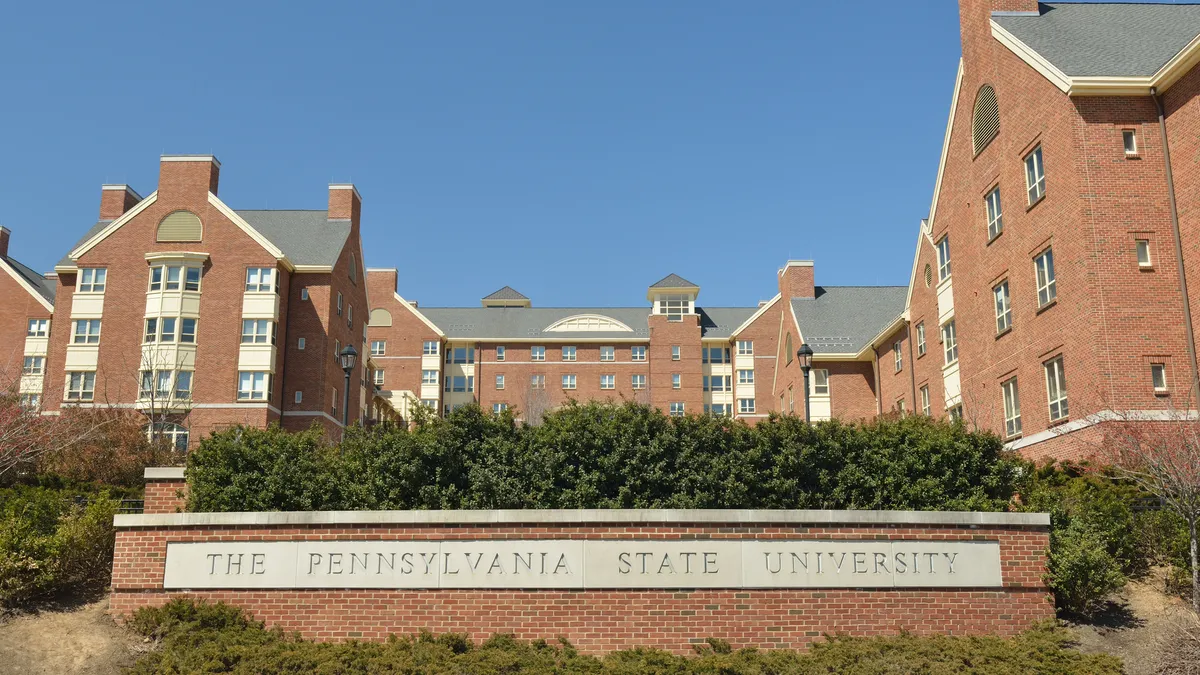COVID-19 has made it clear to higher education institutions that it's time to take an innovative approach to the way things have always been done. But in the midst of fluctuating infection rates, campus closures and a shift to virtual deployment, it's not always been clear where they should start — and there's clearly no shortage of areas ripe for innovation.
For many institutions, the logical path forward is a return to the central mission of higher education: supporting student success. It's by looking at the new higher education experience from the perspective of a student, and identifying the most important milestones for change.
"Getting the tools and platforms and experiences right is complex, especially when many institutions have legacy environments," said Wendy Colby, CEO of AccelerEd, an education technology and services company focused on higher education. "It requires a real shift in the way we design experiences and how we iterate forward from current state. The good news is there are many models to draw from and an incredible amount of innovation already taking place."
Here are three sources of innovation institutions can pursue based on the most important stakeholders in higher education — students.
1. Student access to content
The most pressing priority institutions face in classroom innovation is making sure students who want to continue their higher education path have the access they need to do so. While restrictions to campus life required institutions to get creative in coordinating that access, many succeeded. Widespread innovation has popularized several opportunities, such as the following:
- New learning modalities, with institutions pioneering or expanding online instruction programs with an eye for portable records and comprehensive learning profiles as well as accessibility and assistive tools.
- Temporary grade adjustments, such as swapping out GPA and letter grades for pass/fail grades.
- Updated credentialing, like micro-credentials that focus on specific competencies within in-demand industries or fields of work.
- Unprecedented financing, marked by interest in income-share agreements between universities and students to ease the burden of student loans.
These shifts have allowed students to get what they need when they need it, despite the uncertainty and limited on-campus access that has marked the past year.
"In my experience working with hundreds of universities, few are starting at square one when it comes to instructional content," Colby said. "It's a matter of curating and organizing content in the right way, and surrounding that content with engaging learning experiences that promote understanding, critical thinking, skill building, collaboration and retention."
2. Student access to faculty
For 164 university representatives surveyed by AccelerEd and Higher Ed Dive's studioID, the most important priority when shifting from education-as-usual to the pandemic protocol was faculty training and management. And that makes sense — the pandemic completely altered the landscape for many traditional universities accustomed to operating in a physical classroom setting with some digital augmentation. It meant faculty had to learn new ways of engaging with students, which also involved learning how to best deploy tools and technologies to bring learning alive.
"For those who have experience in online education, there's a recognition that you can't just lift and shift the traditional modality and expect the same results," said Colby. "Online education is an art too — objectives matter, expertise in the discipline matters, quality instruction matters, faculty matters. But the way in which you communicate and reinforce learning concepts and keep the learning fresh requires the ability to design purposefully for online. We have an opportunity to partner with faculty and empower them to advance learning in these new modalities — what is sure to be our next normal."
3. Student access to collaboration and connection
The pandemic has forced institutions to take a closer look at how they build community in remote virtual settings. For many institutions, this has inspired discussion on areas where education experiences and personal wellbeing and equity intersect. It has also put increased focus on how to facilitate or mirror the rich and interactive relationships students develop during a traditional academic experience.
While many students look forward to seeing their friends and instructors on campus and in the classroom again, there is value that has come from digital collaboration too.
"I expect we will see a rise in how chat and other collaboration tools will support both formal and informal communication," said Colby. "We're finding that students use chat in the same way it is used in other social connections. It's an opportunity to engage less formally. It communicates approachability; you can share a link or send an emoji to brighten someone's day. The key is in how to incorporate it as a valuable instructional tool with intention."
Innovative student experiences are shaped from the ground up
In many ways, COVID-19 has amplified and accelerated the need for new learning capabilities, giving higher education institutions the opportunity to create new models that extend access to powerful learning experiences. While old barriers still impede progress, we are seeing successful implementations and experimentations — from paper-based grades or transcripts reimagined as comprehensive learner records relevant to the world of work, or artificial intelligence (AI) to provide learning guidance and support.
So much is possible, and yet navigating through the change is challenging. Innovations and creative partnerships dance around the edges of the higher education space today, yet they also represent what it will take to advance from the outdated education models of the past into an educational landscape and ecosystem that allows for iteration — a truly proactive approach to the student experience not held back by tradition.
"What if student enrollment became as welcoming as the Apple store?" asked Colby. "Or if you invited students into a course in a personalized and dynamic way that mirrors the experience they might have on Amazon? The most innovative institutions are unlocking new value for students and faculty in very intentional and purposeful ways."










